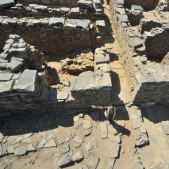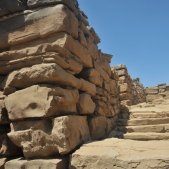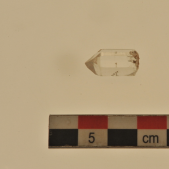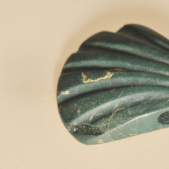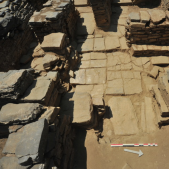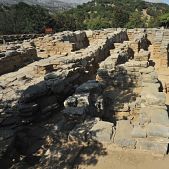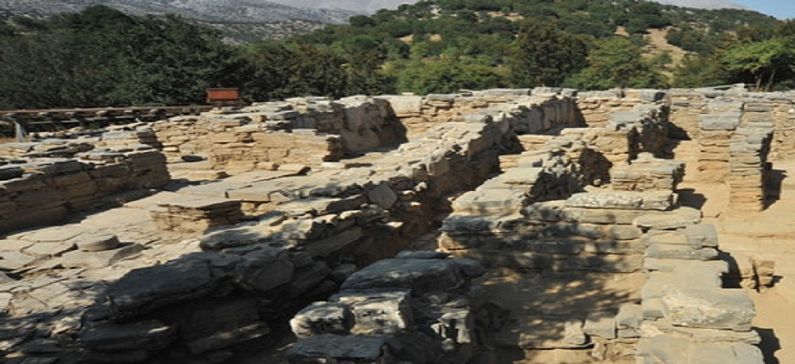
New impressive findings in the Minoan palace of Zominthos in Psiloritis
New impressive entrances in the Minoan palace of Zominthos in Psiloritis were revealed in this year’s excavation, which was held for six weeks (July and August 2017) by the Honorary Director of Antiquities Dr. Efi Sapounas-Sakellarakis. New information also emerged about the interior layout of the complex and its architecture (scales, rich decoration), and numerous finds from the research inside and in its rooms, where, among other things, a very rare coin of Mark Aurelius was found dating about 161-180 AD. All findings suggest the importance of this huge, labyrinthian building.
Two new entrances were uncovered. The one on the northeastern corner of the palace is particularly detailed with an anteroom with desks on both sides. This entrance leads through a large corridor to the great sanctuary of the eastern wing in which a stepped altar and cave have already been revealed. During the excavation, the entrance of the Southeastern corner was also found, but unfortunately it is not saved in good condition, as it underwent many modifications in the later years (Mycenaean and Roman), but also a great destruction due to the looters of the 1960s. It seems, however, that it was magnificent, with scales, starting from the lower level of the hill, where the palace is built, in its central courtyard. However, both entrances are of different type from the central northern entrance, which is architecturally less complex.
Another internal staircase was revealed during the excavation, while the walls, some of which survive up to three meters high, prove that the building had many leverls. Its large halls supported the upper floors with central pillars or columns. Floors that came to light this year, some made from glittering limestone and other from pebbles, suggest the luxury that prevailed inside it, as well as the frescoed mortars that adorned the rooms.
In a luxurious area, located above the metallurgical workshop, stamps came to light, one of which, with a representation of a holy knot, had fallen from the upper floor, a rhinestone with a coil decoration and a vase part with a relief decoration of a small pig. Pig-shaped decorations have been found in sanctuaries like Phaistos and is associated with the later worship of Cretan Zeus. Already in Zominthos, the excavators have found a worship vessel (rhyton) in the shape of a pig.
In the next room, the stone cases that were revealed, would contain precious objects, which the tenants took with them, leaving behind little remains, such as a small bronze scarab, a local emblem of the Egyptians, a seal and many inedible sea nails, showing that they worshiped a marine god, as we know from Knossos. Many vases were also found in the same room.
This year’s excavation also revealed bronze objects such as textbooks, stone pots, seals, a bone tile that resembles those of the famous Knossos, parts of large clay vessels, ceramic wheels and bee cell remains. The latter show the occupation of beekeepers and beekeeping, except of the exploitation of the rich flora and fauna of Psiloritis. The scale and character of the palace occupants’ activities on the mountain, which was of course economic, political and religious, is thus proven. Its connection with Knossos – the first installation in Zomintos in 1900 BC is almost identical to that of Knossos – and on the other with the Idaean Cave, which was the most important and perhaps the oldest sanctuary of Crete, shows its great importance.
This year’s work in the metallurgical furnace continued, revealing new constructions. Besides, in various spaces of the building were found ferrous rocks, which were examined by specialists of the Research Technology Foundation.
We should remind that the palace of Zominthos was located and excavated by Yannis Sakellarakis in the ’80s. The last period of systematic excavations began in 2004 and continues.

